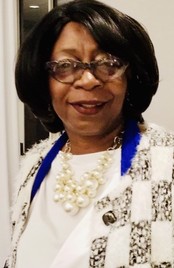|
At their virtual October meeting, the MHC conditionally approved a new historical marker for Samuel Smith, an African American teenage victim of a 1924 lynching in Nashville. The Commission required that support letters from the community be received within two days of the meeting in order for the marker to move forward. However, since the required support letters were not received by that date, the marker is deferred until further notice. MHC staff will be meeting with the Cane Ridge community and descendants of the Eastwood and Smith families for input and support before bringing the marker back to the MHC.
In October, MHC staff submitted two street name change reports to Metro Council. One addressed the proposed renaming of a portion of Sharpe Ave between McFerrin Ave and CSX Railroad to “West Sharpe Ave.” Originally called “Osage Avenue,” the subject portion of Sharpe Avenue was platted in 1906 as part of Thornby Place, running east-west between the L & N railroad and McFerrin Avenue. In 1941, the City of Nashville changed the name of Osage Street to Sharpe Avenue. Read more about the history of this street and area here. A second report focused on a potential re-naming of a portion of 10th Circle N to “Rev. Kelly M. Smith Way,” in honor of the late pastor of First Baptist Church, Capitol Hill. Read about Rev. Smith's legacy here.
MHZC news
The MHZC’s November public hearing will be on Wednesday, November 18th at 2:00 p.m. and will be a virtual meeting. Guidance regarding meeting access and submitting comments can be found on our Coronavirus Procedures page.
View the MHZC meeting schedule and application deadlines here. Access archived videos of the MHZC meetings on the Metro YouTube channel anytime!
The MHC extends a warm welcome to two new commissioners, Jhennifer Amundson and Pamela Bobo, both confirmed on September 15th.

Dr. Jhennifer Amundson fills the unexpired term of former commissioner Michelle Hall. Commissioner Amundson joins the commission with a robust educational and professional background in architectural history. She earned a Bachelor of Science degree in architecture studies and a Master of Architecture from the University of Illinois, Urbana-Champaign and a Ph.D. in art and architectural history from the University of Delaware. Dr. Amundson taught architecture coursework at several universities, including the University of Illinois, University of Delware, North Carolina State University and Judson University. In 2019, she was appointed as the Dean of the new O'More College of Architecture and Design at Belmont University, where she also serves as the Chair of the Department of Architecture and a Professor of Architecture. Her other previous affiliations include the Society of Architectural Historians, Athenaeum of Philadelphia and Landmarks Preservation Council of Illinois. Welcome, Commissioner Amundson!
|

Ms. Pamela Bobo fills the unexpired term of late MHC commissioner Bob Allen. She earned a Bachelor of Science in History, a Master of Education in History Education and completed graduate studies in History and Geography at Tennessee State University (TSU). For over 22 years, she has been an Instructor of History at TSU in the Department of History, Political Science, Geography and African Studies. Ms. Bobo has served many years on the planning committee for the annual Nashville Conference on African American History and Culture. Welcome, Commissioner Bobo!
|
November is Native American Heritage Month! Middle Tennessee has many fascinating connections to indigenous history, as the area was home to a large Native American population from about 1100-1450 CE.
One such example in the Forest Hills area, Aaittafama' Archaeological Park is a significant Mississippian-era site. Aaittafama', which translates to "meeting place," was named by the Friends of Aaittafama' with input from the modern-day Chickasaw Nation who, along with the Creeks, speak Moskogean--a language thought to derive from that spoken by the Mississippian peoples. As the last known archaeologically-intact Mississippian site remaining in Davidson County, the park is one of the Nashville area's most important and unusual prehistoric and cultural resources. Using the recent master plan, MHC and Metro Parks are working closely to plan for the site and interpret its rich history.
Rendering of salt production at Sulpher Springs Mississippian site in Nashville. Source: Aaittafama'/Kellytown Master Plan.
Some Native American sites in Davidson County have also been listed in the National Register of Historic Places (NRHP) for their cultural significance and archeological potential. The 1973 NRHP nomination for Brick Church Mound and Village Site documented that site's significance as an aboriginal village of the Middle and Late Mississippian periods. The site included a mound, stone box graves and numerous house sites. At the time of listing, it was considered one of the best archaeological sites remaining in Tennessee. Sadly, the site was destroyed by church and residential development beginning in the 1970s and 80s. Read more about the site's history and salvage archaeological excavations in this 2010 TDOA journal. Sandbar Village, listed in the NRHP in 1994 under the Mississippian Cultural Resources of the Central Basin (AD 900--1450) multiple property context document, has been studied by multiple archaeologists and was first documented between 1967 and 1974. A 2012 report notes that Sandbar Village is believed to represent "a peripheral section of a large town (and possible mound center)." The site has ties to both the Woodland and Mississippian eras.
Native American history has also been well-documented at Travellers Rest, well-known for its connections to Judge John Overton and its significant late-18th century architecture. The site has ties to both Prehistoric and Historic Non-Aboriginal archaeology and was occupied by Mississippian-era Native Americans between A.D. 1400 and A.D. 1475. As William Edward Meyer, Tennessee's first professional archaeologist, wrote: "There was a large Indian village at the beautiful Overton Home...The great bold spring and the fertile soil drew the Indians to this site and later caused it to become the center of a great Tennessee estate." Learn more about the early Native American history of the site here.
Attack on Fort Nashborough, 1781 (from TN Blue Book). Source: Native History Association.
While Native Americans largely abandoned the area nearly 350 years before the founding of Nashville, they played a crucial role in the city's establishment. The Native History Association offers an excellent primer on this topic in "Dragging Canoe, The Chickamauga Cherokees And The Battle Of The Bluffs" by Toye Heape. In West Nashville, the MHC historical marker for the Chickasaw Treaty (#17) recounts the history of land rights negotiations between Chickasaw chiefs and new settlers of the area. Settlers were to have the land in the Cumberland country and the Chickasaws laid claim to Tennessee River lands beyond the Duck River ridge. While the tribe befriended Nashville founder James Robertson and his people, the settlers' settlements still experienced raids by Cherokee and Creek tribes. The marker stands in front of West Park Community Center on Morrow Drive.
"Cherokee Indian Council." Source: TSLA.
The Tennessee State Library and Archives (TSLA) has compiled a list of Native American genealogical resources. While not an exhaustive bibliography of Native American material found at TSLA, it serves as a guide to original source material needed for basic genealogical research on families that maintained their political ties to the Indian Nation. See here for historical maps and portraits related to Tennessee's Native American inhabitants. TSLA is now open by appointment.
When one examines Nashville's past, several examples of historical environmental injustice can be found. One such example is Black Bottom, a community established around 1832 and once located where SoBro stands today. Initially home to European immigrants and later to a primarily African American population, the area was subject to flooding that left the streets muddy, which led to the moniker (also used to reflect racial makeup). Black Bottom's residents, the poorest Black Nashvillians, had to live alongside constant filth and stagnant pools of disease carrying water with few open spaces and alleys filled with detritus. Due to livability issues and urban renewal, the community ceased to exist by 1960.
A 1907 Nashville Banner cartoon depicts Black Bottom as a blemish on Nashville's morality. Source: Vanderbilt University: Historic Black Nashville story map.
Another major instance of local environmental injustice is the routing of I-40 through North Nashville, a move which destroyed much of the African American community in that part of the city. Construction began in 1968, against the wishes and without input from much of the affected Black residents. This led to the destruction of 626 homes and 128 businesses owned primarily by African Americans, including sixteen blocks on Jefferson Street alone. This loss represented 80% of the Black-owned businesses in Nashville.
Image of Pearl High 1942 homecoming parade, showing some of the many businesses that once lined Jefferson Street. Many of these were demolished or closed due to the interstate. Credit: Pearl High archives.
Perpetuated by housing discrimination and the early- to mid-20th century common practice of "redlining," racially-segregated housing also provided much of the underpinnings that allowed historical environmental injustices to occur. Nashville was not immune to this incredibly damaging institution and it's long-term ramifications are still apparent. A recent article featuring MHC Commissioner Chakita Patterson of United Street Tours talks about the history of redlining, government-sanctioned housing segregation, gentrification and other housing issues.
1935 redlining map of Nashville. Source: Mapping Inequality.
These are only a few examples of environmental injustice in Nashville, with many more written into the pages of history. In response to these disparities, Urban Green Lab, a Nashville-based nonprofit that teaches communities how to live sustainably, is developing a new partnership with Tennessee State University (TSU) to teach Nashvillians about the basics of environmental justice. The new Nashville Environmental Justice Initiative (NEJI) will train leaders from diverse community institutions – like development firms, regulatory agencies, corporations, nonprofits, and schools – about the history and principles of the environmental justice movement, and how to make more inclusive decisions around urban growth in disadvantaged neighborhoods.
The Environmental Protection Agency defines environmental justice as "the fair treatment and meaningful involvement of everyone in the development of environmental laws, regulations, and policies." The initiative begins this fall with a one-year study led by TSU. The study will map the need for systemic environmental justice training in the city, plus collect best practices from around the country and data to better inform development decisions. Urban Green Lab will use the study’s findings to strengthen its current sustainability education programs.
Learn more about UGL at the free, virtual Nashville Sustainability Roundtable on November 10th!
Progress continues to be made on repairs at the Neoclassical-style J.B. Richardson Engine Company No. 14, also known as the Holly Street Fire Hall, which sustained moderate damage during the March tornado. Restoration specialists The Tradesmen Group, Inc. and Roof Resources, Inc. have been working to repair the roof, walls and other elements like flashing and beadboard ceilings of the 1914 building. They also re-framed the gable end wall on the old community center (attached at the south) to match the gable end wall of the truck bay, replacing rotten wood and trim. Check out this photo album showing much of the progress!
A member of The Tradesmen Group works on the fire hall's east wall. Credit: The Tradesmen Group.
Metro ITS just made it easier to navigate the Parcel Viewer for those looking up what properties might be in one of multiple types of historic overlays. If you are not already familiar with it, you can visit the interactive mapping tool here. Specific properties may be located using the street name, full address or parcel number. The site contains a multitude of information, including different “layers” that can be turned on and off.
There are presently four different layers that represent historic overlays (including National Register and local historic districts), but because they each have different names they were spread out within a long list. All four layers are newly grouped together, starting with the name “historic,” so it is clear that there is more than one type of historic overlay. This is a great way to explore the location of individual or district historic properties in Davidson County and see which ones are (and are not yet) protected by local historic zoning.

In October, longtime Tennessee Historical Society (THS) Executive Director Ann Toplovich retired after 30 years of service. That month, the THS appointed Jennifer C. Core, then-Director of Membership and Programs, as Toplovich's successor in the role. Since 2012, Core also directed the Tennessee History Day program and she is a folklorist and educator by training with Masters degrees from the University of Tennessee, Knoxville and Indiana University, Bloomington. She formerly held positions at the Tennessee Arts Commission and the Grand Ole Opry archives. Congratulations, Ms. Core!
|
|